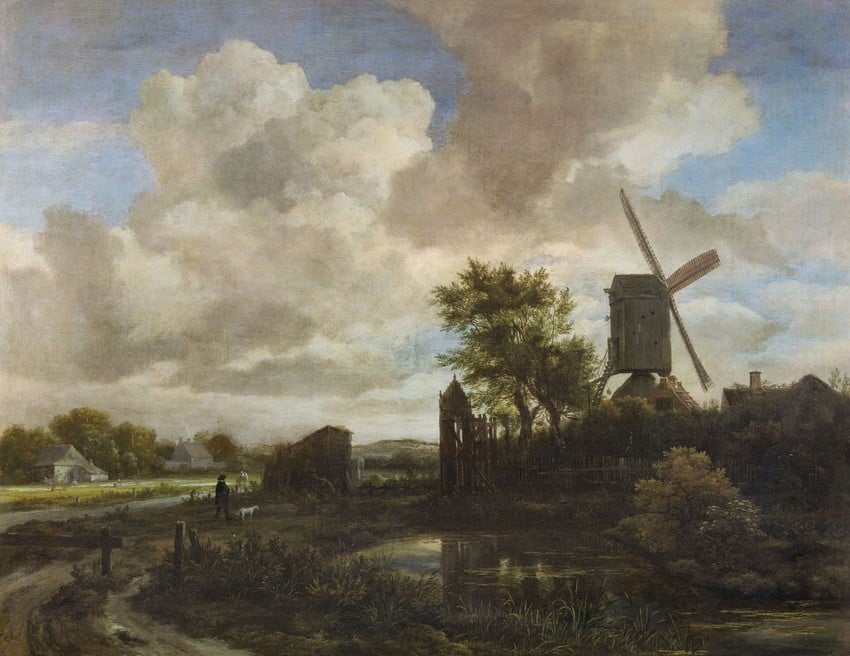
Dutch Landscapes
JAN VAN DER HEYDEN (GORINCHEM 1637-AMSTERDAM 1712)
A Country House on the Vliet near Delft
c.1660Oil on panel | 46.6 x 58.8 cm (support, canvas/panel/stretcher external) | RCIN 405948
The country house in the right middle ground has been identified as one which used to lie on the river Vliet, running between Delft and The Hague. Though this is possible, the house does not seem sufficiently distinctive to permit such a specific identification. This scene, however, depicts a fashionable part of Holland in the seventeenth century: a navigable canal or river with a well-kept towpath and a considerable volume of freight traffic. Lining the water are houses with plots of land extending into the flat, low-lying, fertile, reclaimed land. There is an alternation of elegant farmhouses, like the one with a stepped gable and hayrick, and buitenplaatsen (country houses), like the one nearer to us, with its ionic pilasters and dormer windows with scroll surrounds (as opposed to the more traditional gables). This house has a stone gate and a topiary hedge with claire-vues and an avenue of trees.
This image by Heyden (1637-1712) is notable for its restrained depiction of evening light, with more white than gold in the spectrum and just a hint of pink in some of the clouds. But it is the vivid naturalism of the scene, with its matter-of-fact viewpoint, recording a public thoroughfare with no deference to the country house, which so remarkably anticipates the landscapes of the Impressionists. It is also possible that Constable had seen this painting when he painted his Scene on a Navigable River in 1816–17 (Tate, London), with its sparkling pointillist touch and scrupulous record of a working inland waterway.
Signed lower left: 'Heyde'
Text adapted from Dutch Landscapes, London, 2010
This image by Heyden (1637-1712) is notable for its restrained depiction of evening light, with more white than gold in the spectrum and just a hint of pink in some of the clouds. But it is the vivid naturalism of the scene, with its matter-of-fact viewpoint, recording a public thoroughfare with no deference to the country house, which so remarkably anticipates the landscapes of the Impressionists. It is also possible that Constable had seen this painting when he painted his Scene on a Navigable River in 1816–17 (Tate, London), with its sparkling pointillist touch and scrupulous record of a working inland waterway.
Signed lower left: 'Heyde'
Text adapted from Dutch Landscapes, London, 2010




